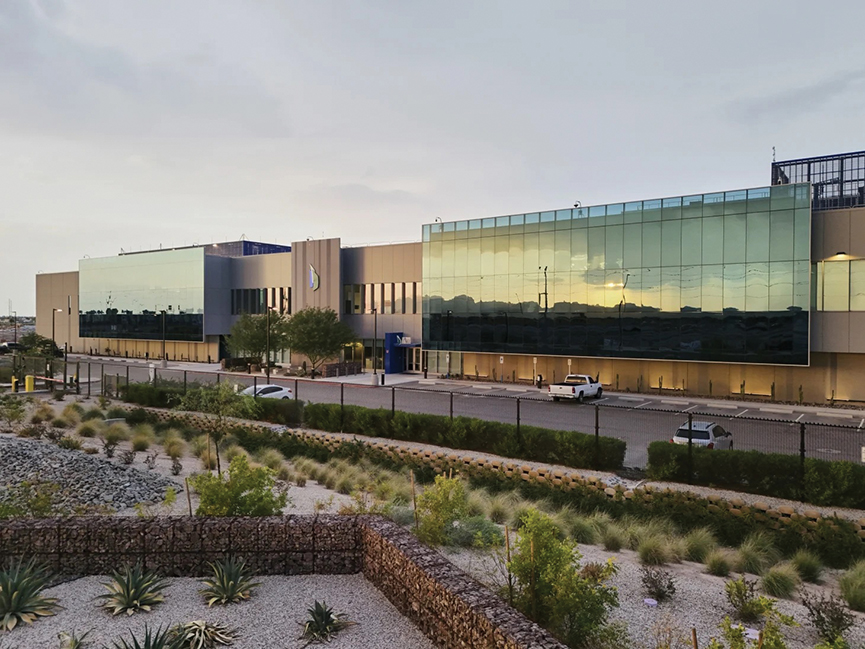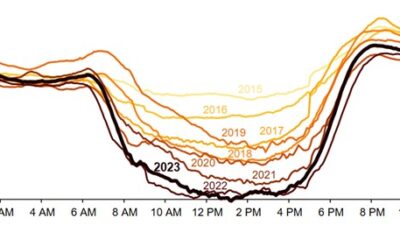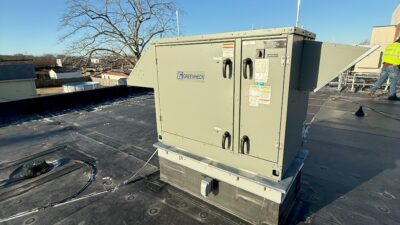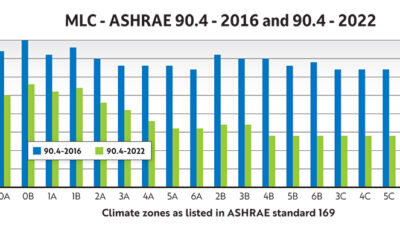Codes and standards, such as those from ASHRAE, ICC, NFPA and others, help define the requirements of designing data centers.

Data center insights
- As the data center industry grows, engineers need to know how codes can work within flexible designs.
- Being aware of code changes, even if they haven’t been adopted by the local authority having jurisdiction, will ensure data centers exceed expectations and requirements.
Respondents:
- Chris Barth, PE, Senior Mechanical Engineer, HDR, Inc., Phoenix
- Jarron Gass, PE, CFPS, Fire Protection Discipline Leader, CDM Smith, Pittsburgh
- William Kosik, PE, CEM, LEED AP, Lead Senior Mechanical Engineer, kW Mission Critical Engineering, Chicago
- Corey Wallace, PE, NICET IV, Principal Engineer – Fire Protection, Southland Industries, Las Vegas
Please explain some of the codes, standards and guidelines you commonly use during the project’s design process. Which codes/standards should engineers be most aware of?
Chris Barth: The most important place to start for applicable project codes is the authority having jurisdiction (AHJ). AHJs are increasingly applying amendments to their codes and ordinances that apply directly to data center projects, particularly in regions with prolific data center growth. These adopted codes can have far-reaching impacts on a project’s design, budget and construction. This is particularly true for codes and standards that apply to battery storage systems, like the International Fire Code and the National Fire Protection Association (NFPA). The application and amendments of these codes significantly impact the planning and engineering systems for facilities.
Project design standards or guidelines to adopt should always align with owner/tenant facility goals. Organizations like ASHRAE, the American National Standards Institute, UL, Uptime Institute and FM Global have excellent published guidelines for recommended data center infrastructure. However, owner or tenant requirements may differ based on the needs of specific computing equipment.
Jarron Gass: With my focus in fire protection, the primary codes and standards I work with are the NFPA standards related to fire alarm and suppression systems. Chief among these are NFPA 13: Standard for the Installation of Sprinkler Systems, NFPA 2001: Standard on Clean Agent Fire Extinguishing Systems and NFPA 72: National Fire Alarm and Signaling Code. As battery technologies and universal power supply (UPS) systems continue to advance, there is also a growing emphasis on NFPA 855: Standard for the Installation of Stationary Energy Storage Systems. These standards are typically adopted by reference within the building and fire codes enforced by individual states or local jurisdictions.
William Kosik: Technological improvements and changes for data centers to ensure reliability and efficiency standards require design professionals within the power and cooling industry to get involved with organizations that are responsible for publishing data center specific guidelines. A primary example of this is ASHRAE, where individuals can get involved in some of the committees that deal specifically with data center cooling. It might take the time at first to volunteer and get more involved, but I think it’s a positive, long-term relationship, and it should be explored within each professional engineering organization. A good example of this is the impact of the TC 9.9 committee on the release of ASHRAE Standard 90.4: Energy Standard for Data Centers. Many of the revisions to this code came from the community at large, including individual engineers, manufacturing and equipment representatives. Other organizations such as The Green Grid, Lawrence Berkeley National Laboratory, U.S. Green Building Council and LEED programs are all good examples of ways to get involved and provide necessary input into how the next standards will be revised and improved.
Have new codes and standards focused on efficiency or sustainability affected data center design?
Jarron Gass: New efficiency and sustainability standards are reshaping data center design. ASHRAE Standard 90.4 and Energy Star promote energy-efficient power and cooling systems, while certifications like LEED and ISO 14001: Environmental management systems encourage sustainable building practices. Innovations in cooling, such as liquid cooling and the adoption of higher temperature thresholds, are also improving overall efficiency. Data centers increasingly integrate renewable energy sources and adhere to e-waste regulations, such as the Waste Electrical and Electronic Equipment Directive. These trends support the adoption of modular designs, artificial intelligence (AI)-powered energy management, and renewable energy implementation. Collectively, these evolving standards and practices help data centers balance high performance with sustainability, aligning with both regulatory requirements and corporate environmental goals.
What are some best practices to ensure that such buildings meet and exceed codes and standards?
Jarron Gass: Meeting and exceeding data center codes and standards requires a holistic design approach. Compliance starts with established frameworks such as ASHRAE 90.4, LEED, ISO 14001, ENERGY STAR and applicable local codes and regulations—each setting benchmarks for energy efficiency and sustainability. Energy-conscious design begins with thoughtful site selection, passive cooling strategies and high-performance building materials. Advanced cooling technologies, including liquid cooling and hot/cold aisle containment, are used to optimize airflow and thermal management. Smart power distribution systems incorporate renewable energy, microgrids, and high-efficiency components, while information technology optimization minimizes energy waste at the equipment level.
Real-time monitoring, often powered by AI, ensures optimal performance and proactive adjustments. Sustainable material use and responsible e-waste management further contribute to lifecycle efficiency. Regular compliance audits, third-party certifications, and benchmarking efforts support ongoing improvement. Designing with scalability and future regulatory changes in mind helps ensure long-term sustainability and operational efficiency. Importantly, this integrated approach doesn’t end with design, but extends through construction, implementation and into ongoing operational procedures. It’s a continuous effort to balance performance, cost-effectiveness and environmental responsibility while staying ahead of evolving global standards.
How are codes, standards or guidelines for energy efficiency impacting the design of data centers?
Jarron Gass: Energy efficiency codes and standards are revolutionizing data center design by driving lower power consumption, enhanced cooling and greater sustainability. ASHRAE 90.4, ENERGY STAR and other regulations set more stringent efficiency benchmarks, promoting the adoption of high-efficiency UPS systems, economizers and liquid cooling technologies. The integration of renewable energy, AI-driven optimization and smarter workload distribution further reduces power usage. Compliance with standards like LEED, ISO 14001 and e-waste regulations ensures sustainability throughout the lifecycle. Modular designs, higher rack densities and real-time monitoring systems also contribute to efficiency gains. These evolving regulations guide data centers toward carbon reduction, smarter infrastructure and automated energy management, ultimately supporting long-term sustainability and offering potential cost savings.
What new or updated code, standard, guideline, organization or association do you feel will change the way such projects are designed, bid out or built?
Chris Barth: Electrical utility providers and constraints on power delivery to data center campuses will continue to impact facilities and large campuses across the country. While decarbonized solutions such as hydrogen, fuel cells, and nuclear are gaining momentum, these are potentially still several years away from large-scale deployment. On-site power generation utilizing natural gas may potentially bridge the solution in the short term as the decarbonized technologies scale up and work through regulatory challenges.
Jarron Gass: While not all codes keep pace with the latest technology and industry advancements, some, like ASHRAE 90.4-2022, enforce stricter energy efficiency requirements with an emphasis on renewable energy and advanced cooling solutions. Industry groups and organizations, such as The Uptime Institute, are also driving innovation by expanding their resiliency and sustainability standards, which require data centers to integrate energy-efficient infrastructure. Certain state-level laws, like in California, now mandate energy usage disclosure and compliance with efficiency standards, which influence both site selection and operational planning. These evolving regulations push data centers toward greater transparency, sustainability and operational efficiency, shaping project design and vendor choices. Staying ahead of these regulatory changes ensures compliance while optimizing performance, cost, and environmental impact.
What are some of the biggest challenges when considering code compliance and designing or working with existing buildings?
Chris Barth: Older facilities were delivered around equipment that was designed to meet previously adopted code cycles. When this apparatus is replaced with modern equipment, a like-for like replacement is not usually possible. Structural upgrades, improvements to building exterior systems and increases in facility electrical services are often necessary to accommodate new building requirements.
Jarron Gass: Dealing with conflicting codes and standards in data center design can be challenging, especially when trying to balance innovative approaches with established practices, all while ensuring fire protection and life safety requirements are met. The first step is to thoroughly understand the scope of each code and identify any overlaps or contradictions, focusing on mandatory versus recommended standards. Safety and compliance should always be prioritized, ensuring that critical safety codes take precedence. Consulting with industry experts and local authorities for clarification is essential. Designing with flexibility and modularity allows for future updates, helping to meet customer goals. Incorporating best practices from multiple standards enables a balance of safety, efficiency and sustainability. It’s important to regularly monitor and adapt to evolving codes, maintaining decision trees for easy reference. Early and frequent collaboration with key stakeholders throughout the design phase helps address conflicts proactively, ensuring compliance while optimizing performance.
Corey Wallace: Existing buildings remove flexibility and require more creativity. You have to find the best design to fit in the box and have less influence to change the box. The biggest challenge is developing multiple options enough to get a reliable cost comparison of the options. You then need to get input on which option provides the most value to the owner or end-user.



